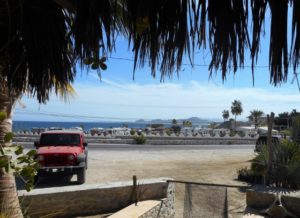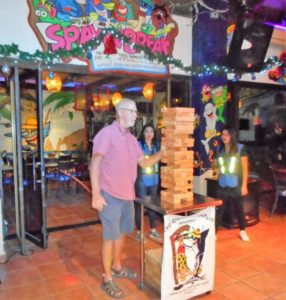
December 31, 2017 – Sitting here at the Baja Sunrise RV Park in Los Barriles, it still sinking in that we have no more tours to lead on Baja this season. Dave & Darlene, Larry & Janet and Lorne & Josie will be taking care of that for the remainder of the 2017/2018 Baja Season. Tonight, we are heading out to the Smoke House with Mike & Kelly, for some live music and good food to bring in the New Year, should be fun.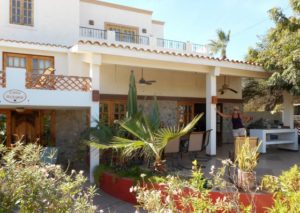
After a couple of days in Loreto we headed for La Paz and Campestre Maranatha. The weather was good, not to warm and little wind, great driving conditions for Baja. We had some errands in town and went out for dinner with Oscar & Barbara who dropped off from the fall 38 Day tour on December 4 with Guy & Glenda.
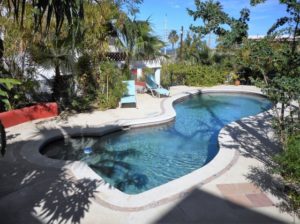
December 23rd, we departed for Cabo San Lucas for Christmas. Coming from La Paz we headed down Hwy 19 which was the quickest route for sure. Interesting drive as we have not traveled this direction to Los Cabos for a decade. Fortunately Peter had arranged for us to stay at the Vagabundos del Mar Trailer Park which had been hard hit by Tropical Storm Lydia on September 1st. Vags had been thru many Storms and Hurricanes in the past, however because of the new bypass road from the Los Cabos International Airport to Hwy 19 the existing arroyos were not properly rerouted. In turn when Lydia arrived dumping immense amounts of rain on Los Cabos instead of heading to the usual arroyos it was rediverted to an area behind a Golf Course and behind a large wall. Soon the wall, designed to divert water, became the Hoover Dam, which subsequently burst causing a tidal wave of water, sand, rocks and debris surging across the golf course, businesses, the Los Cabos Connector and thru the Vagabundos del Mar Trailer Park, Chev Dealership and Club Cabo has it headed to the Sea. We have seen some videos of the event and photos of what was left afterwards, simply devastating.

Since then the staff at Vags has been working diligently to do their best to get the park cleaned up. First with a loader to remove debris and sand, then with shovels and power washers, they have made the park accessible and somewhat operational. The pool has been emptied of sand, the restaurant has also had all the sand, debris and one car removed. The RVs spaces beside the pool and restaurant are now operational as well. The real challenge will be the park behind the restaurant, area where all the permanentes (year round rentals) where located. Peter lost his Park Model (and Razors) to the storm, gone, washed away and the building it was in, hence we were able to park on his space. Sounds like they will remove the remaining trailers and other assorted vehicles. Then what remains of all the structures that housed the RVs. Finally they will bring in a bulldozer to flatten the area and prepare the site to reopen as an RV Park once again. Not a bad plan given no one is likely to purchase the property soon.
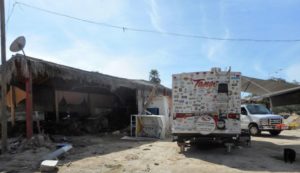
The day we arrived we joined Kelly’s family for dinner at “Mi Casa”, they had booked into an “All Inclusive for Xmas”. After dinner we headed in downtown Cabo for a look around at the various Bars and Shops, ending up at the “Giggling Marlin” for a drink and some fun. It was great to meet Kelly’s family, which included her Mom, Sister Shannon and Brother, spouses and kids. We took a Taxi back to the park and turned in well after “Baja Midnight”.
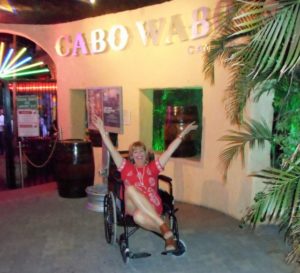
Xmas eve day we headed over to Peter & Geraldine’s pad in “Cabo Bello”, a very nice gated community next to the RV Park we stayed at “Villa Serena”. I dropped over to Rick & Veronica’s house in Cabo Bello to see if they were home and say Merry Xams, they were They have been busy decorating their home with many unique items pickup with recent visits trips to mainland Mexico, wonderful. Later we headed over to the “Puerta Vieja” Restaurant for dinner; great food and view of the Arch. We spent Xmas day with Peter & Geraldine, some of their friends dropped bye (Mary & Kemp) and Jose, Cindy & Ross joined us for dinner. Peter’s Egg Nog was fabulous as was the BBQed Turkey. Our Xmas with good friends and good food in Cabo San Lucas will be memorable for years to come, thank you Geraldine & Peter. Boxing day we headed up to a condo development “Solaria” where Geraldine was hosting an open house, then headed to lunch. Unfortunately Peter could not join us as his back was really acting up (started on Xmas Day).
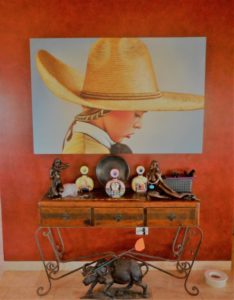
Dec 27th we were off to Los Barriles and the Baja Sunrise RV Park, we had called Jorge the day before and he was working on a space just for us. When we arrived it was almost finished, Jorge and his staff work hard to improve this Campground every day. We joined Guy & Glenda at “Open Mike” night at the “La Fugata” restaurant, this was interesting and included some real talent. The next day Mike & Kelly joined us to meet with Eliza at “Casa Rubano” in Buena Vista, this is the house rented for the kids in February, nice digs. On Friday we joined Mike & Kelly, Barry & Viv and Guy & Glenda at 3 Dog Corner for dinner which sets up Dylan’s Hot Dog & Hamburger Stand. Lots of fun and a decent hamburger, big turnout of Canadians and Americans. Yesterday we visited the local Saturday Vendors Market, and purchased a couple of turnovers that were awesome. Later we got together and shared some spirits.
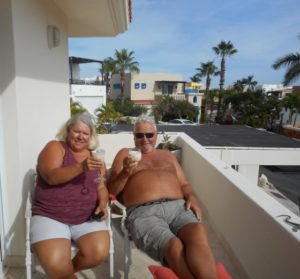
Prospero Ano Neuvo
Did you know?
The Gulf of California (also known as the Sea of Cortez, Sea of Cortés or Vermilion Sea; locally known in the Spanish language as Mar de Cortés or Mar Bermejo or Golfo de California) is a marginal sea of the Pacific Ocean that separates the Baja California Peninsula from the Mexican mainland. It is bordered by the states of Baja California, Baja California Sur, Sonora, and Sinaloa with a coastline of approximately 4,000 km (2,500 mi). Rivers which flow into the Gulf of California include the Colorado, Fuerte, Mayo, Sinaloa, Sonora, and the Yaqui. The gulf’s surface area is about 160,000 km2 (62,000 sq mi).

The Gulf is thought to be one of the most diverse seas on the planet, and is home to more than 5,000 species of micro-invertebrates. Home to over a million people, Baja California is the second-longest peninsula in the world, after the Malay Peninsula in Southeast Asia. Parts of the Gulf of California are a UNESCO World Heritage Site.
Geography
The International Hydrographic Organization defines the southern limit of the Gulf of California as: “A line joining Piastla Point (23°38’N) in Mexico, and the southern extreme of Lower California”. The Gulf of California is 1,126 km (700 mi) long and 48–241 km (30–150 mi) wide, with an area of 177,000 km2 (68,000 sq mi), a mean depth of 818.08 m (2,684.0 ft), and a volume of 145,000 km3 (35,000 cu mi).

The Gulf of California includes three faunal regions:
• the Northern Gulf of California
• the Central Gulf of California
• the Southern Gulf of California
One recognized transition zone is termed the Southwestern Baja California Peninsula. Transition zones exist between faunal regions, and they usually vary for each individual species. (Faunal regions are distinguishable based on the specific types of animals found there).
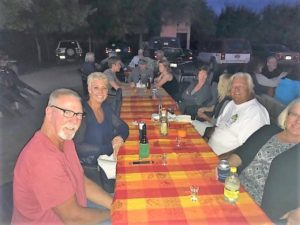
Temperature
The temperature of the water in the Gulf of California generally experiences lows of 16 °C (61 °F) in winter and highs of 24 °C (75 °F) in summer. But temperatures can vary greatly in the gulf, and the water is almost always warmer by the coast than the open ocean. For example, the waters surrounding La Paz reach 30 °C (86 °F) in August, while the waters in neighboring city Cabo San Lucas, only reach 26 °C (79 °F). Occasionally, the northern Gulf of California will go through significantly cold winters. The water in the Northern Gulf can sometimes drop below 8 °C (46 °F), which can lead to a large die-off of marine organisms. The animals most susceptible to the large decrease in water temperature include macroscopic algae and plankton.

Geology
Geologic evidence is widely interpreted by geologists as indicating the Gulf of California came into being around 5.3 million years ago as tectonic forces rifted the Baja California Peninsula off the North American Plate. As part of this process, the East Pacific Rise propagated up the middle of the Gulf along the seabed. This extension of the East Pacific Rise is often referred to as the Gulf of California Rift Zone. The Gulf would extend as far as Indio, California, except for the tremendous delta created by the Colorado River. This delta blocks the sea from flooding the Mexicali and Imperial Valleys. Volcanism dominates the East Pacific Rise. The island of Isla Tortuga is one example of this ongoing volcanic activity. Furthermore, hydrothermal vents due to extension tectonic regime, related to the opening of the Gulf of California, are found in the Bahía de Concepción, Baja California Sur.

Weather
Even though the shores of the Gulf of California are generally sheltered from the continuous wave shock that is experienced by most other North American shores, storms known as a “chubasco” can cause significant damage to shorelines, despite their brevity.
Marine Life
The narrow sea is home to a unique and rich ecosystem. In addition to a wide range of endemic creatures, such as the critically endangered tiny vaquita (aka “desert porpoise”), it hosts many migratory species, such as the humpback whale, California gray whale, killer whale, manta ray, Humboldt squid and leatherback sea turtle, and the world’s largest animal, the blue whale. The unusual resident populations of fin whales and sperm whales do not migrate annually. The area near the delta of the Colorado river has a small remnant population of the totoaba fish. This region has historically been a magnet for world-class sport fishing activities, with a rich history of sporting world records.

The region also has a rich history as a commercial fishery. However, the data vary wildly according to the species being studied, and the Gulf’s ability to recuperate after years of overfishing remains uncertain. Moreover, changes in terrestrial ecology, such as the vast reduction in flow from the Colorado River into the Gulf, have negatively affected fisheries, particularly in the northern region. The Gulf of California sustains a large number of marine mammals, many of which are rare and endangered. Its more than 900 islands are important nesting sites for thousands of seabirds, and its waters are primary breeding, feeding, and nursing grounds for myriad migratory and resident fish species. For decades, the gulf has been a primary source of two of Mexico’s leading marine resources, sardines and anchovies. Water pollution is a problem in the Gulf of California, but the more immediate concerns are overfishing and bottom trawling, which destroys eelgrass beds and shellfish.
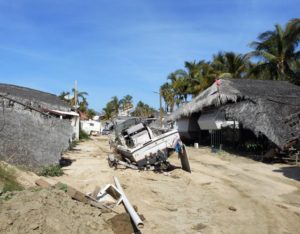
Efforts by the Mexican government to create conservation zones and nature reserves have been hampered by lack of enforcement resources, as well as a lack of a political consensus on this issue of conservation of the Gulf. This occurs even though significant areas are a UNESCO World Heritage Site. The thousands of miles of coastline are remote and difficult to police, and the politically powerful commercial fishing industry has been slow to embrace even economically viable conservation measures, much less strict measures of conservation. Conservation of the Gulf’s fisheries and coastlines is also complicated by a long history of overcapitalization in the sector, and the direct, often negative, impacts that conservation measures have on the livelihoods of Mexico’s coastal inhabitants. At present, the Mexican government and business interests have promoted a macro-level, tourist development vision for the Gulf, the impacts of which on local ecology and society are uncertain.
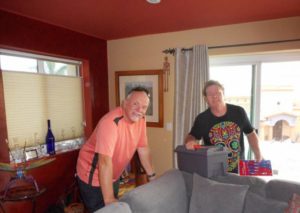
Coastal communities are highly reliant on both commercial and sport fishing, including San Felipe, San Carlos, Sonora, Cabo San Lucas, La Paz, Loreto, Guaymas, Bahía Kino, Puerto Peñasco, Topolobampo and Mulegé. The well-developed shrimp and sardine fleets of Mazatlán, on the Mexican mainland’s Pacific coast, heavily exploit the commercial fisheries of the southern Gulf. Many marine organisms can only survive within a particular salinity range, which makes salinity a notable factor in determining the types of potentially commercial organisms found in the Gulf of California. The mean annual ranges of salinity of the Sea of Cortez are between 3.5 and 3.58% at the surface. Furthermore, the salinity of the water of the Northern Gulf of California is generally higher than the Central and Southern faunal regions due to the increased amount of evaporation that occurs in that region.
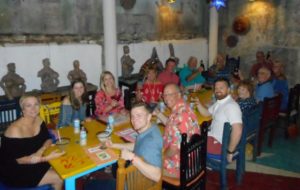
Shores and tides
The three general types of shores found in the Gulf of California include rocky shore, sandy beach, and tidal flat. Some of the rich biodiversity and high endemism that characterize the Gulf of California and make it such a hotspot for fishing can be attributed to seemingly insignificant factors, such as the types of rocks that make up a shore. Beaches with softer, more porous rocks (such as Coquina limestone, rhyolites, granite, or diorite) generally have a higher species richness than those with harder, smoother rocks (such as basalt or diabase). Porous rocks will naturally have more cracks and crevices in them, making them ideal living spaces for many animals. The rocks themselves, however, generally need to be stable on the shore for a habitat to be stable. Additionally, the color of the rocks can affect the organisms living on a shore. For example, darker rocks will be significantly warmer than lighter ones, and can deter animals that do not have a high tolerance for heat. The northern Gulf of California experiences tidal ranges of up to 5 m (16 ft). Mixed semidiurnal tides are the norm throughout most of the Gulf.

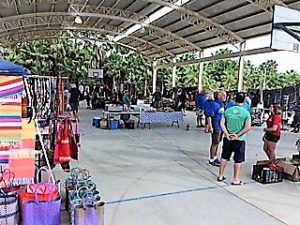
Estuaries
In the Gulf of California, there are a number of negative estuaries, that is, ones in which the evaporation of seawater is relatively greater than that of the fresh water input. The salinities of these inlets are higher than that of the ocean. The temperatures, poikilothermal, of these negative estuaries also are higher than the general temperature of the Gulf. It is possible that at one time these estuaries were positive, that is, ones in which the seawater component is diluted; therefore, the water is brackish, with salinity less than that of the ocean.
However, due to human modification of the land use around the Gulf of California and water diversion for municipal and agricultural use, there are no longer many rivers that freely empty into the Gulf of California. The upper Colorado River Delta is one example of a historically major estuary and wetlands ecosystem, that since the 20th century construction of upriver dams and diversion aqueducts on the Colorado River, is now a small ephemeral remnant estuary. It is included in the UNESCO World Heritage Site. The remaining Gulf inlets still are important to several species of fishes, crustaceans, and shellfish that are commercially harvested.
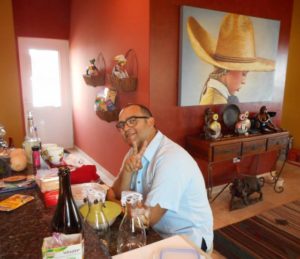
Islands
The Gulf of California contains 37 major islands – the two largest being Isla Ángel de la Guarda and Tiburón Island. Most of the islands are found on the peninsular side of the gulf. In fact, many of the islands of the Sea of Cortez are the result of volcanic explosions that occurred during the early history of Baja California. The islands of Islas Marías, Islas San Francisco, and Isla Partida are thought to be the result of such explosions. The formations of the islands, however, are not dependent on each other. They were each formed as a result of an individual structural occurrence. Several islands, including Isla Coronados, are home to volcanoes.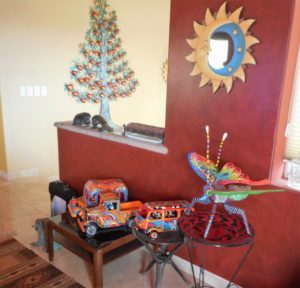
The gulf has more than 900 islets and islands which together total about 420 hectares. All of them as a whole were enacted as “Area Reserve and Migratory Bird Refuge and Wildlife” on August 2, 1978. In June 2000, the islands were given a new category “Protection Area Wildlife”. In addition to this effort by the Mexican government, for its importance and recognition worldwide, all islands in the Gulf of California are also part of the international program “Man and Biosphere” (MAB) and are part of the World Reserve Network UNESCO Biosphere as Special Biosphere Reserve. Due to the vast expanse covered by this federal protected area conservation and management is carried out through a system of four regional directorates (one per bordering the Gulf of California state) by way of co-direction. There is a regional directorate in the states of Baja California, Baja California Sur, Sonora and Sinaloa. Notwithstanding the foregoing, the work of direct and indirect conservation is done in the islands is governed by a single Management Program, published in 2000, which is complemented by local and specific management programs (at individuals) archipelagos. The Directorate of Protection Area Wildlife California Gulf Islands (APFF-GCR) in Baja California is responsible for 56 islands located off the coast of the state. These are grouped into four archipelagos: San Luis Gonzaga or Enchanted, Guardian Angel, Bahia de Los Angeles and San Lorenzo.
